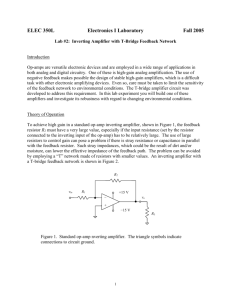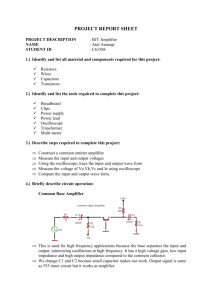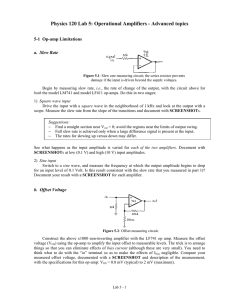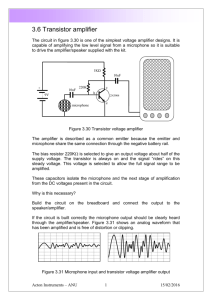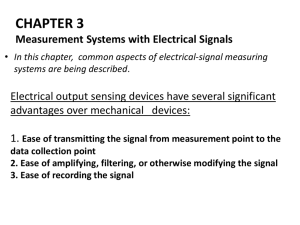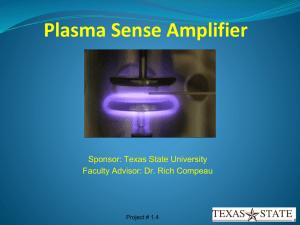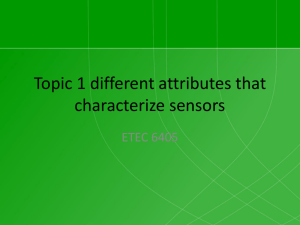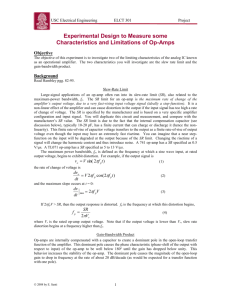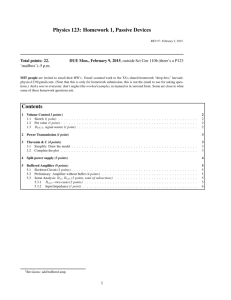Circuit Diagram Analysis for the Magnetic Densimeter
advertisement
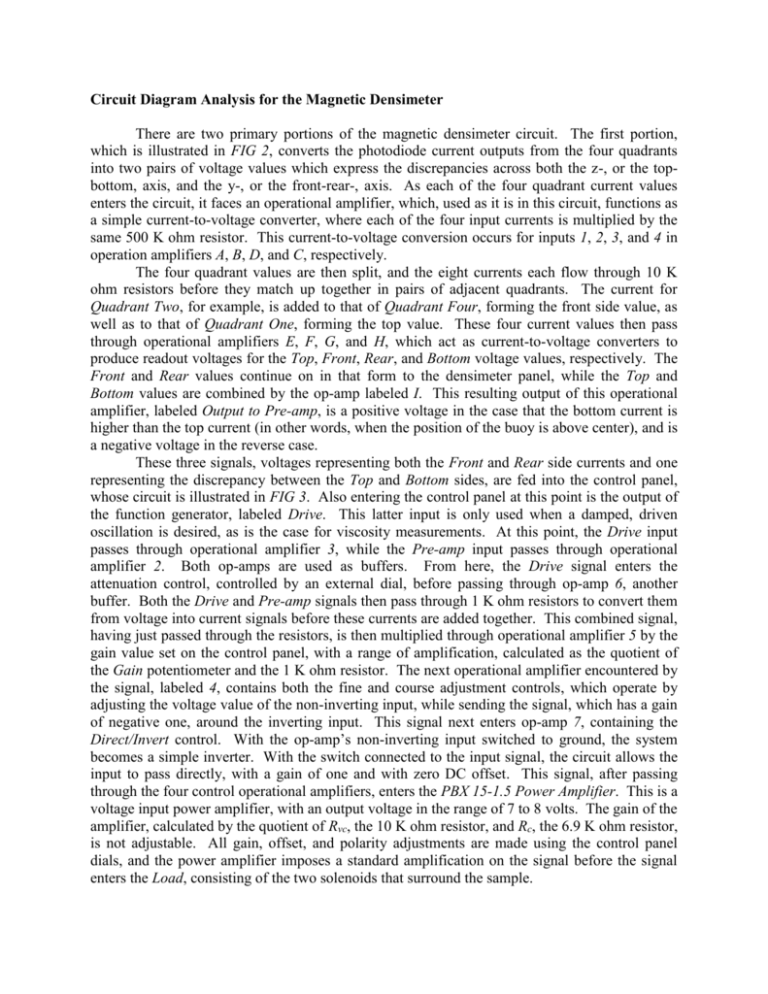
Circuit Diagram Analysis for the Magnetic Densimeter There are two primary portions of the magnetic densimeter circuit. The first portion, which is illustrated in FIG 2, converts the photodiode current outputs from the four quadrants into two pairs of voltage values which express the discrepancies across both the z-, or the topbottom, axis, and the y-, or the front-rear-, axis. As each of the four quadrant current values enters the circuit, it faces an operational amplifier, which, used as it is in this circuit, functions as a simple current-to-voltage converter, where each of the four input currents is multiplied by the same 500 K ohm resistor. This current-to-voltage conversion occurs for inputs 1, 2, 3, and 4 in operation amplifiers A, B, D, and C, respectively. The four quadrant values are then split, and the eight currents each flow through 10 K ohm resistors before they match up together in pairs of adjacent quadrants. The current for Quadrant Two, for example, is added to that of Quadrant Four, forming the front side value, as well as to that of Quadrant One, forming the top value. These four current values then pass through operational amplifiers E, F, G, and H, which act as current-to-voltage converters to produce readout voltages for the Top, Front, Rear, and Bottom voltage values, respectively. The Front and Rear values continue on in that form to the densimeter panel, while the Top and Bottom values are combined by the op-amp labeled I. This resulting output of this operational amplifier, labeled Output to Pre-amp, is a positive voltage in the case that the bottom current is higher than the top current (in other words, when the position of the buoy is above center), and is a negative voltage in the reverse case. These three signals, voltages representing both the Front and Rear side currents and one representing the discrepancy between the Top and Bottom sides, are fed into the control panel, whose circuit is illustrated in FIG 3. Also entering the control panel at this point is the output of the function generator, labeled Drive. This latter input is only used when a damped, driven oscillation is desired, as is the case for viscosity measurements. At this point, the Drive input passes through operational amplifier 3, while the Pre-amp input passes through operational amplifier 2. Both op-amps are used as buffers. From here, the Drive signal enters the attenuation control, controlled by an external dial, before passing through op-amp 6, another buffer. Both the Drive and Pre-amp signals then pass through 1 K ohm resistors to convert them from voltage into current signals before these currents are added together. This combined signal, having just passed through the resistors, is then multiplied through operational amplifier 5 by the gain value set on the control panel, with a range of amplification, calculated as the quotient of the Gain potentiometer and the 1 K ohm resistor. The next operational amplifier encountered by the signal, labeled 4, contains both the fine and course adjustment controls, which operate by adjusting the voltage value of the non-inverting input, while sending the signal, which has a gain of negative one, around the inverting input. This signal next enters op-amp 7, containing the Direct/Invert control. With the op-amp’s non-inverting input switched to ground, the system becomes a simple inverter. With the switch connected to the input signal, the circuit allows the input to pass directly, with a gain of one and with zero DC offset. This signal, after passing through the four control operational amplifiers, enters the PBX 15-1.5 Power Amplifier. This is a voltage input power amplifier, with an output voltage in the range of 7 to 8 volts. The gain of the amplifier, calculated by the quotient of Rvc, the 10 K ohm resistor, and Rc, the 6.9 K ohm resistor, is not adjustable. All gain, offset, and polarity adjustments are made using the control panel dials, and the power amplifier imposes a standard amplification on the signal before the signal enters the Load, consisting of the two solenoids that surround the sample. Also illustrated in FIG 3 are the Front / Rear monitor and the LED output circuit. The F/R monitor is simply the same combination that occurs with the Top / Bottom signal in the Preamp. Here, a negative output at TP1 indicates that the voltage from Front is higher, and thus that the ball, along the y-axis, is too far to the rear. The Infra-red LED circuit utilizes a voltage regulator within a basic precision current limiter circuit. The goal here is to produce an LED output with the least amount of fluctuation possible, as these fluctuations would carry into the feedback portion of the circuit and be manifested as current changes in the solenoid. The ability to successfully achieve relatively stable levitation confirms that the LED output is sufficiently uniform through time, though some discrepancies in uniformity are apparent between the four quadrants, as will be described in the section that follows.









